How to Create Well-Drained Soil in Pots – What You Need to Know!
-
Kristin Hitchcock
- Last updated:
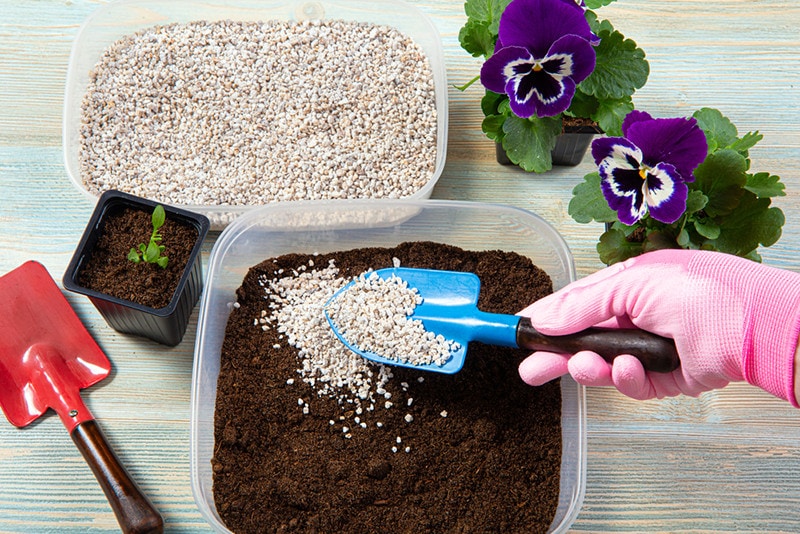
Many plants need well-draining soil, especially when being planted in pots. Plant drainage is vital to prevent fungus and mold from building up on the plant’s roots, which can be deadly. Luckily, most potting soil companies know this. Therefore, they create their soil to be well-draining. However, this still may not be enough for all plants.
In these cases, you may have to take steps to make the soil drain even better. Plants used to drier conditions often need soil that drains extremely well, for instance.
It is possible to make your plant’s soil drain better. Let’s take a look at several possible methods.
How to Create Well-Drained Soil in Pots
1. Mix the Soil with a Well-Draining Medium
Some soil ingredients drain better than others. The easiest way to help your pots drain is to mix your current soil with an ingredient that drains better. Several ingredients fulfill this job, but each has pros and cons.
Perlite
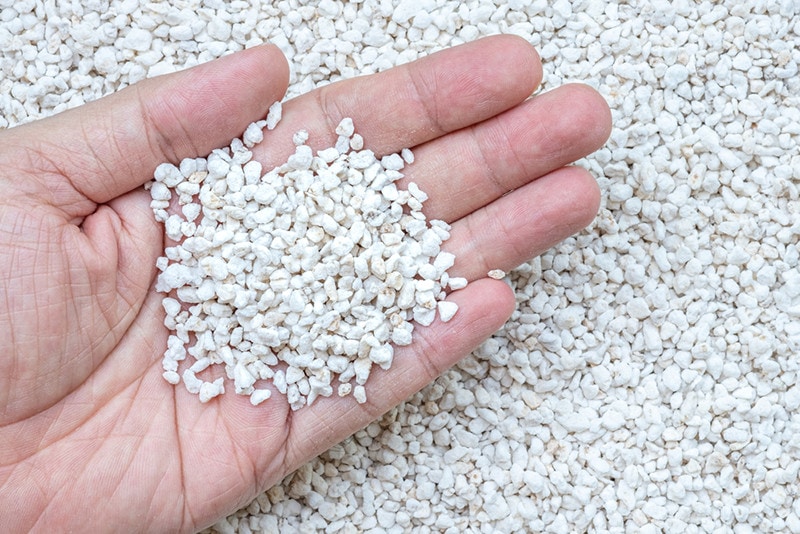
This lightweight, porous material is a popular, well-draining medium. It’s often used in hydroponic growing and nurseries. There are different sizes available, but most work well for potting soil.
This material is completely non-toxic and odorless. Simply put, it’s a type of rock. It cannot hold any nutrients, so it can’t make up much of your plant’s soil, or all the nutrients will be washed away. It improves drainage and aeration greatly and because it is rock, it won’t compact over time. It remains airy and light, making it easier for your plants to grow roots.
Perlite is very lightweight. Therefore, it does tend to float during watering. However, as long as you aren’t watering a lot, it doesn’t tend to float away. It can be dusty when dry, which may irritate the lungs of some gardeners. Sometimes, it can contain fluoride, which some plants are sensitive to. Some sources may also contain high levels of aluminum, which can be released if the pH gets too low.
Vermiculite
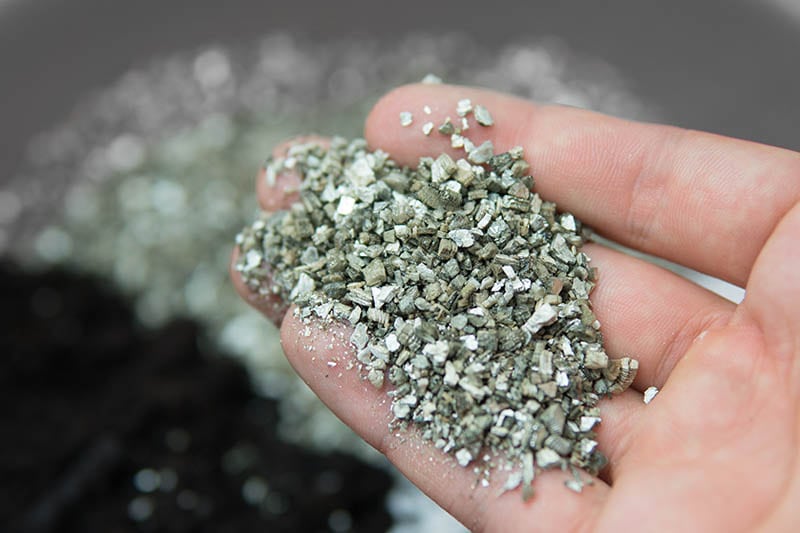
This material is another type of rock. It has an accordion-like shape that allows water to be retained within the rock. Therefore, the water drains from the soil and into the rock material. However, it can be re-released into the soil as it dries so this rock is well-known for its water-retention abilities.
You should only use horticultural-grade vermiculite inside your pots. This is often sold at gardening stores. Do not purchase this rock if it has been made for construction, as it is of lower quality.
Vermiculite can retain some nutrients which are slowly released into the soil. Therefore, it is a great option for seed germination or nutrient-hungry plants. It also has a great pH-buffering ability.
This rock can be easily compressed, however, so it will break down over time. You’ll have to re-mix every few years. This does release nutrients into the soil, but it also destroys the structure of the soil. This is the least durable option of all the materials we’ve listed.
The pH can vary, as well. Most vermiculite is on the alkaline side, however.
Coarse Sand
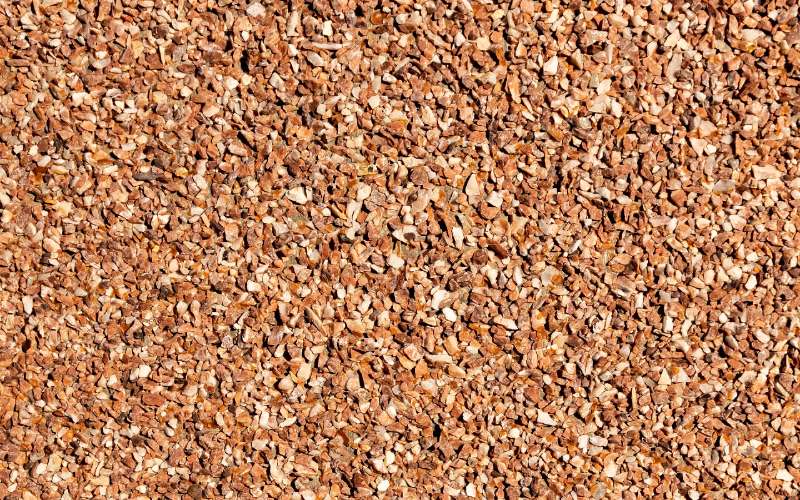
Sand is one of the basic components of all soil. However, you may need to add more if you want to increase drainage. Sand is made up of tiny quartz crystals, which do not absorb water. Therefore, the water will run right through the sand and drain out.
Sand is very heavy, and it condenses easily. If you’ve ever built a sand castle, you’ll know what we’re talking about. However, this feature can be an issue for plants, as it can cause impaction. A plant can’t grow roots through impacted sand, plus, impacted sand at the bottom of the pot may actually prevent drainage.
Sand only works well when the particles are larger. Smaller particles will compact together and have the opposite effect. You should not use sand with clay soils, either. The very fine clay particles will seep through the space between sand particles. You’ll need to add a lot of sand to clay-based soils to make a difference in drainage.
This material does have a neutral pH, however. It also isn’t dusty and is completely safe. Therefore, it doesn’t have some of the health concerns associated with the other mediums.
2. Test the Soil
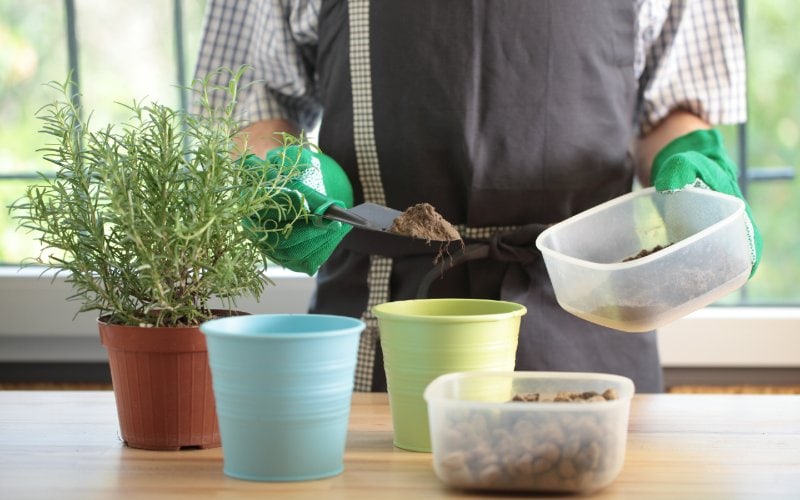
After adding one of the above materials to your soil, you should perform a test to see if drainage has been improved. This test is straightforward, requiring a portion of the new soil and a portion of the old.
Fill one pot with new soil and one with old soil. Poor the same amount of water into each (we recommend two cups). Then, allow each pot to empty into another container. After a few minutes, check to see how much water has drained from each. If a pot drains well, about half the water should drain out of the soil.
Preferably, your new, amended potting soil should meet this description. If it doesn’t you may need to add more of the draining medium. You may also find that it may drain too much of the water. In this case, add more of your original soil to the mixture.
Keep testing until you come up with soil that you’re happy with. Remember that some plants may need soil that drains more than the above parameters. Adjust accordingly.
3. Repot Your Plant
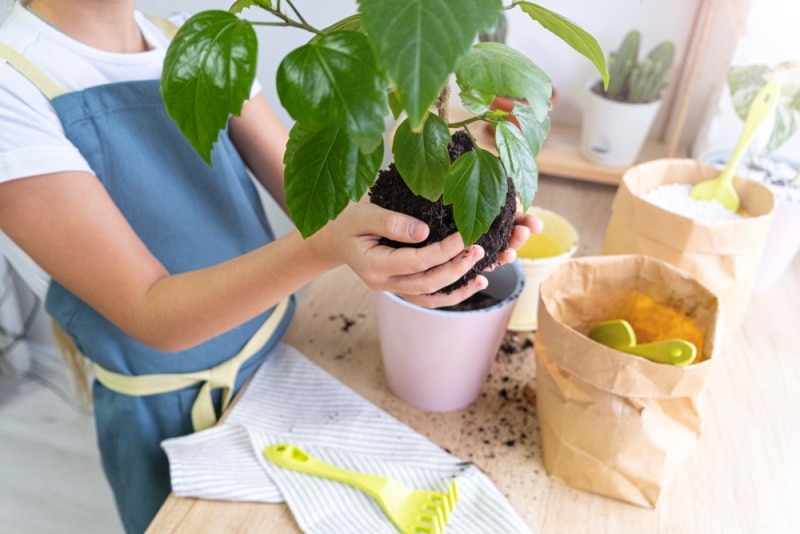
Once you’re happy with this soil, you’ll need to repot your plant carefully. You should attempt to remove as much of the old medium from the root ball as possible. However, don’t damage the roots in the process. You don’t have to remove everything. Eventually, the old medium left on the roots will mix with the new as the roots grow.
Follow any potting guidelines specific to your plant’s species.
4. Keep an Eye on Your Plant
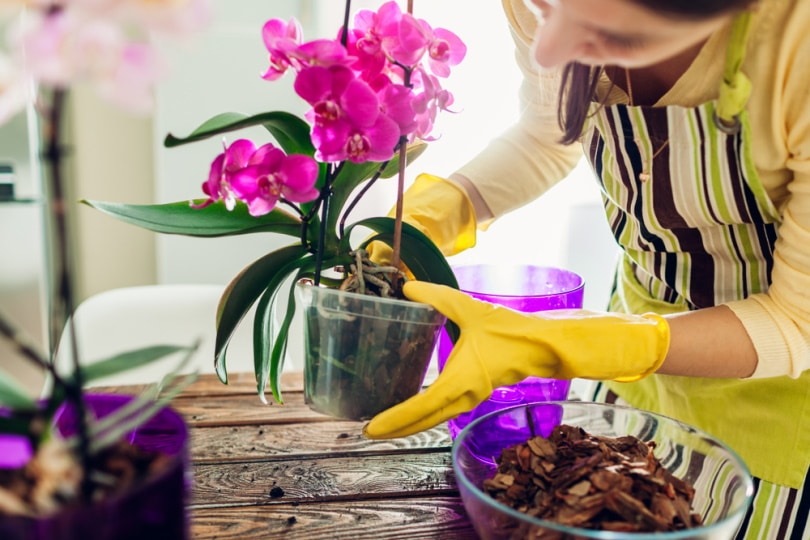
After repotting, keep an eye on your plant for several weeks to ensure that you actually helped the problem. The test should have let you determine whether the new medium drained better. However, the plant may sometimes need other parameters changed to thrive.
Conclusion
To improve the drainage of potting soil, you’ll need to add a material that helps with drainage. Three main materials do this. Each one is slightly different and works better in certain situations, however, they should all improve drainage considerably. Therefore, which one you choose isn’t terribly important.
There are also other usable materials. However, these aren’t as widely accessible or may not work as well. For instance, some gardeners use pumice. This rock is very airy, though, making it float on water. Plus, it’s harder to find for gardening purposes.
Featured Image Credit: FotoHelin, Shutterstock
Contents
